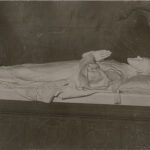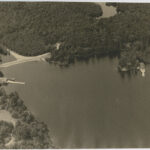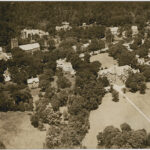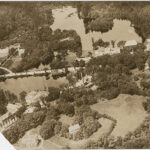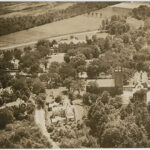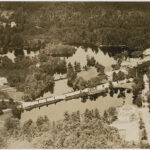The Form Plaques of John Gregory Wiggins
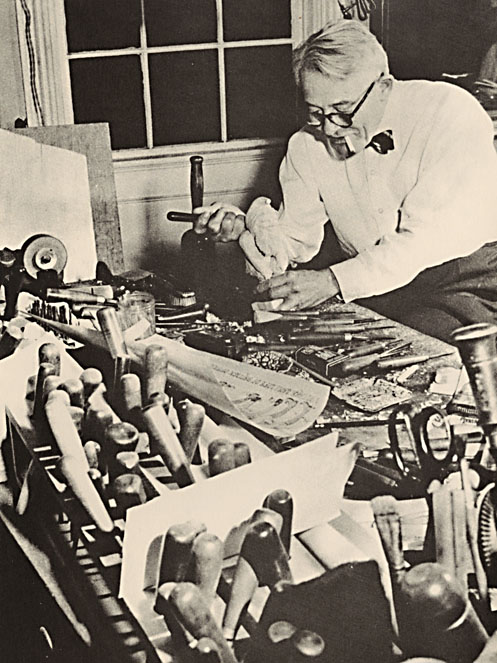 While a student at the Pomfret School in Connecticut, John Gregory Wiggins studied under Samuel Smith Drury, a close friend of the Wiggins family. It was Drury who encouraged Wiggins to join the faculty at St. Paul’s School once he had finished his studies at Harvard. Following the appointment of Drury as fourth Rector in 1911, Wiggins came to St. Paul’s School where he was a faculty member from 1912 through 1916. During his four years here, Wiggins taught Latin, Greek and German, coached crew, and lived in the New Upper. In 1917 he joined the American Field Service in France, eventually becoming a second lieutenant in the Army and serving in France for the duration of World War I.
While a student at the Pomfret School in Connecticut, John Gregory Wiggins studied under Samuel Smith Drury, a close friend of the Wiggins family. It was Drury who encouraged Wiggins to join the faculty at St. Paul’s School once he had finished his studies at Harvard. Following the appointment of Drury as fourth Rector in 1911, Wiggins came to St. Paul’s School where he was a faculty member from 1912 through 1916. During his four years here, Wiggins taught Latin, Greek and German, coached crew, and lived in the New Upper. In 1917 he joined the American Field Service in France, eventually becoming a second lieutenant in the Army and serving in France for the duration of World War I.
In 1920 Wiggins began carving as a full-time career and in 1921 was enlisted by Drury to create carved plaques to hang above the name panels in the Upper Dining Hall (in the 1930s Drury would also hire him to create a number of carved elements in the New Chapel including the choir stall figures, the bench ends and misericords in the Chantry, and several hand rests on the Chapel stalls). Wiggins began carving the first series of plaques in 1921 – eleven plaques for the Forms of 1911 through 1921. The November 30, 1922 edition of the Horae Scholasticae describes Wiggins work at the beginning of this project:
The most casual visitor to the Upper will recall the fact that the names of the members of several of the Sixth Forms have been carved on the south side of the Hall in the large panels, and that back of the dais appear the names of the original forms as well. For some time there was difficulty in deciding how the numeral of the year of each From should be managed, and many plans were suggested. Finally, about two years ago, a happy inspiration brought about the entrusting of the commission for the work to Mr. J. Gregory Wiggins, a master here from 1912 – 1916. Mr. Wiggins has made it a labour of love, and accepting the task with real pleasure and interest, ransacked all the books he could get on the history of the School, the Horae, the Rural Record – the old school diary kept for the first fifty years of the School’s life; consulted many connected with St. Paul’s, both masters and alumni, and at last began work on the panels for the recent years.
The introduction goes on to acknowledge Wiggins success with this challenging process:
As may be supposed the task of selecting incidents sufficiently significant, and at the same time suitable for carving, has been anything but easy, so that the achievement is the more remarkable. . . The delicacy of the execution of the work is delightful, the sureness of the hand, the flowing line, the admirable handling of his medium, all are distinguished and deserve study, reflecting as they do a very genuine artistic gift. . .
Wiggins humble response to this praise is reflected in a letter written to Drury on December 8th of 1922:
I see by the Horae that Benvenuto Cellini has absolutely nothing on me, and I don’t mind admitting to you I got very embarrassed while reading it.
From these first eleven plaques, Wiggins went on to carve plaques for every Form going back to the first graduating class of 1858 and up through 1953 – one hundred forty-five plaques in all. As accurately predicted by the original Horae article:
When the whole work is over we shall have a most satisfactory, and entirely unique collection of carvings at the Upper.
Wiggins’ work captures the history of St. Paul’s School in a visually compelling narrative that is still accessible today to community members who come and go through the Upper as part of their daily lives. He began this project early in his career as a carver and spent thirty-two years doing creative work for St. Paul’s that would span his entire carving career. He established an artistic tradition at St. Paul’s that has been continued by other carvers over the years and has provided a strong foundation and fine example upon which the project can be continue today.
Return to the Form Plaque Carvings of John Gregory Wiggins exhibit HERE.
Click HERE to see original concept drawings created by Wiggins for several of the plaque designs.
Click HERE to see all of the Form plaque images currently available on OLDA.
Photo: J. Gregory Wiggins in his studio, from The Work of J. Gregory Wiggins, Woodcarver, ©1970 Trustees of Pomfret School. Used with permission.

